The biggest myths about electric cars, debunked
Alexa St. John

- Electric vehicles are gaining momentum.
- But drivers still have a lot of misconceptions about going electric.
Electric cars are gaining traction, bolstered by efforts from the federal government, billions of dollars of investment from the auto industry, and momentum from sustainability advocates all over the globe.
But the US' transition to electric has been slower than other parts of the world, hitting just about 6% EV adoption in 2022.
Some of that can be attributed to real hurdles, with infrastructure, cost, and more. But more people than might think can probably go electric, so long as some major myths are demystified and their questions answered.
Here are 8 of the biggest myths about EVs, debunked:
Myth 1. All EVs are expensive.

Most consumers who aren't very familiar with electric vehicles or weren't early adopters have the perception that all of them are costly.
It's true that the average price paid for a new EV hit $55,089 in April — higher than the average for a new gas-powered vehicle of $48,275, per Kelley Blue Book. Most US consumers have indicated they don't want to spend more than $50,000 on one if they opt to electrify. It's also true that EVs haven't yet hit scale (at least in the US), and EV batteries are generally a really costly component. Plus, most of the EVs that have hit the market so far have been luxury products and bigger vehicles.
But it's important to note that April's average EV price was down $10,096 from a year earlier. Automakers and other industry stakeholders say they are racing to bring the cost of EV batteries down, and that will come with scale, improvements in the supply-and-demand crunch, and more raw material processing in the US. For now, there's a mad dash to secure battery supplies, and that has things volatile. New EV tax credits of up to $7,500 might be able to help, for those cars with sticker prices capped at $55,000 (smaller vehicles) and $80,000 (pickups and SUVs).
Used electric cars are also gaining some traction. It's hard to gauge an EV's resale value, and some of the most popular EV models have depreciated more than others. But the average used EV cost around $38,000 in April, according to Recurrent. The used EV tax credit, which was introduced this year and applies to used EVs listed less than $25,000, could bring the cost of a used one down even more.
Myth 2. I need 400 miles of range.
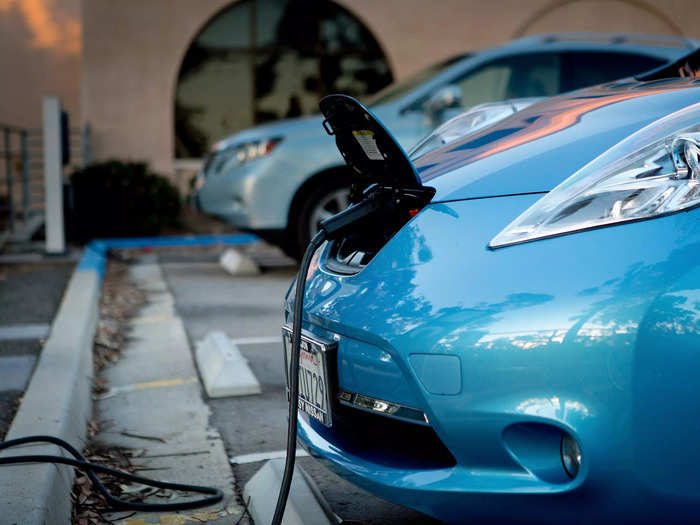
Many consumers also believe they need 400 miles of range with an EV, or more.
In fact, those skeptical of EVs aren't willing to accept less than 353 miles of range, a recent study found.
But the average driver, with average commuting habits and only the occasional longer road trip, would do well with a 300-mile range battery, industry experts say.
Right now, there are plenty of vehicles on the market that offer between 250 and 350 miles of range in optimal driving conditions. There are also higher-end EVs that offer the longest ranges on the market, like the Lucid Air. For the most part, the more range, the more expensive the EV is likely to be.
A lot of factors go into how much range someone driving an EV might need, but they need to consider their access to home charging first. If they do have a garage and plug, it's likely they'll be able to top off their battery overnight before using their EV during the day. If they live in a multi-family dwelling or don't have access to home charging, they'd have to rely on public charging. Certainly, there are roadblocks to this, but more and more businesses, workplaces, and retailers are offering Level 2 charging. Other areas are investing in fast charging.
Public charging has a long way to go, but as it stands, most people in suburban and urban areas won't need 400 miles of range. Still, it's important for the industry to recognize areas where it will be more challenging to electrify.
Myth 3. All EV charging is slow.
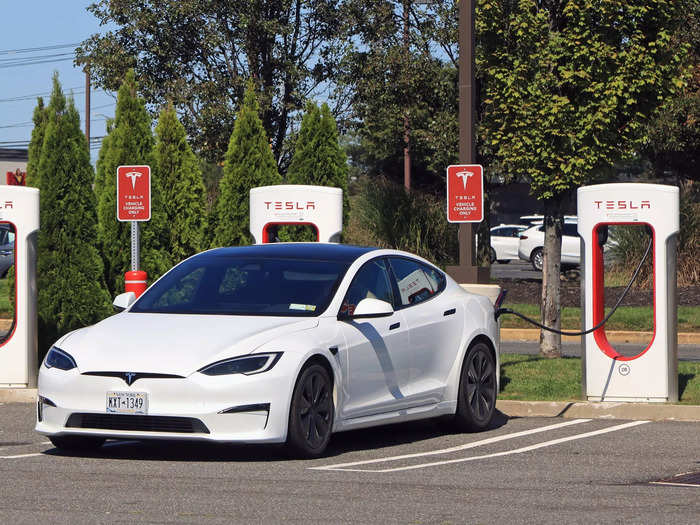
It's true that the time it takes to charge an EV varies, and that regardless of the option, it's likely to take longer than it does to fill up a gasoline-powered vehicle. But that doesn't mean charging has to take an extraordinarily long time, or that it's impossible to own one because of the charging times.
There are a few types of charging.
According to the US Department of Transportation, Level 1 charging could use a standard outlet and take up to two days to charge an EV from dead to 80% (the caveat here is, typically you wouldn't let your EV run all the way to 0%, and you don't always need to top it off to 100% either).
Level 2 charging could get an EV from 0% to 80% in anywhere from 4 to 10 hours.
An EV driver would typically use those two applications overnight or during the day if they're at a workplace for 8 hours.
Level 3 charging, known as DC fast charging, could take just 20 minutes to an hour, according to the DOT — this would be best if you're on a roadtrip or in a hurry.
The key is having access to fast charging.
Myth 4. EVs are hard to find.
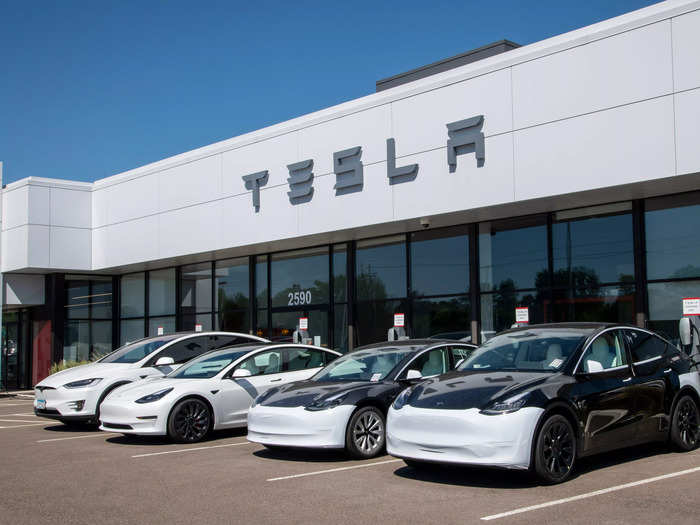
There's no doubt that EVs are changing the auto dealership as we know it.
Tesla was the early ring leader in terms of direct-to-consumer sales of its EVs. Other startups, like Rivian and Lucid, are also using this model and opening retail shops — but not dealerships — where customers can see their electric products but full transactions don't typically go down.
Even some of the legacy automakers are considering shifting their businesses to incorporate more online ordering and purchasing of EVs.
But when car shoppers go to a dealership to check out an electric car, they might not be able to find many, leaving some to think it's hard to get their hands on an EV today.
Part of the problem is inventory. Aside from Tesla, GM, and Nissan, many automakers aren't yet building EVs en masse yet. There are all sorts of supply chain crunches and, with lower adoption rates in the US, not every dealer is getting allocated electric products to showcase.
Customers should keep in mind there's a new way of doing things that has a lot of the EV-buying experience online. Reservations and pre-ordering are especially common in the world of going electric.
Myth 5. EVs are slow.

Perhaps some misconceptions about EV performance stem from GM's EV1, an early electric car that had a complicated journey in the 1990s. Its top speed was electronically limited to 80 miles per hour (though a prototype was able to reach 183 miles per hour, reports say).
But things have changed in the past two decades. There are a variety of electric cars on the market and coming down automakers' product pipelines, and EV tech is improving. That means they drive well and they handle well. (Insider's resident EV product expert Tim Levin has tested more than two dozen EVs and picked his favorites here.)
Of note, EVs accelerate quickly. The Genesis GV60 Performance goes 0 to 60 miles per hour in just 3.7 seconds. The GMC Hummer EV goes 0-60 in 3.5 seconds. Tesla's Model S plaid can do it in 2.3 seconds. Certainly, not all have this same bravado, but many get pretty close.
Myth 6. EVs are worse for the environment than gas-powered vehicles.
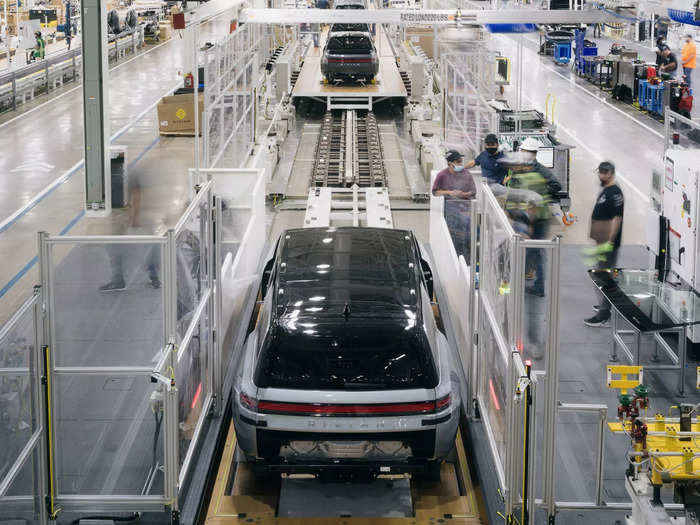
A lot of factors need to be considered when weighing the environmental impact of EVs versus internal-combustion engine vehicles, especially the mining of the raw materials necessary for EV batteries and the kind of electricity used to power these cars once they're on the road.
The Environmental Protection Agency has debunked some myths about the effect EVs could have.
Starting with power: EVs don't produce tailpipe emissions. And even with emissions stemming from electric power generation using coal or natural gas, EVs are generally responsible for fewer greenhouse gas emissions than gas-powered vehicles, according to the EPA. Plus, efforts are in the works to use renewable energy resources to power these cars in the future. Our grids are far from 100% renewable, but there will need to be upgrades.
Moving to manufacturing and materials: Concerns about what goes into making and producing an EV battery are valid, as more carbon pollution can stem from all the additional requirements EVs have that aren't present when building a traditional vehicle. But the EPA says that, over an EV's lifetime, total emissions from manufacturing, charging, and driving an EV are lower than those associated with other vehicles.
EVs are more efficient overall, and while progress needs to be made on the mining side of the equation, efforts are also underway there. EVs ultimately have more potential to become even cleaner than gas-powered cars moving forward.
Myth 7. The right EV isn't on the market for me yet.
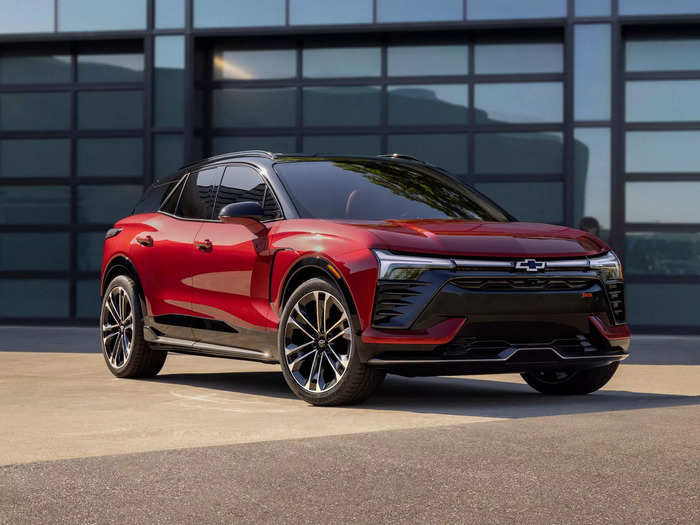
This might have been true a few years back, when your only options were a Tesla, the Nissan Leaf, or the Chevrolet Bolt. But now, dozens of EVs are hitting the market.
There are luxury sedans, like the Lucid Air or Mercedes EQs.
There are pickups, like the Ford F-150 Lightning or Rivian R1T.
There are crossovers and SUVs, like the BMW iX, Cadillac Lyriq, and Hyundai Ioniq 5.
Different brands have different offerings, like the Subaru Solterra or Toyota bX4X.
And there are more coming up, like the Chevrolet Blazer and Silverado EVs.
Even if you don't yet see an EV for your needs out just yet, check what's coming up from automakers — odds are, they'll have it covered soon.
Myth 8. EV repair and service is going to be a hassle.
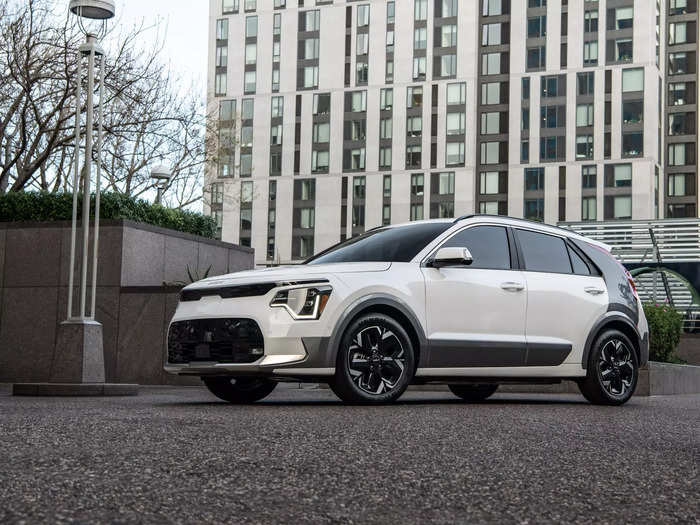
Many people aren't exactly sure how to maintain and service an EV.
The important thing to know is that there are both similarities and differences between maintaining a gas-powered car and an electric one.
Both need tires, wiper replacements, and wiper fluid. Both might need suspension, brake, and bodywork from time to time.
Traditional vehicles need regular maintenance like oil changes that EVs don't. EVs have massive batteries and motors no engine or spark plugs, and generally, fewer moving parts.
But prospective EV buyers should know that EV repairs might be more challenging, might take longer, and could be most costly than those for internal-combustion engine vehicles.
It's part of why traditional automakers have a leg up on EV startups: They already have a nationwide network of shops ready to service vehicles.
You can check out some of the key differences between maintaining the types of vehicles here.
Popular Right Now
Popular Keywords
Advertisement